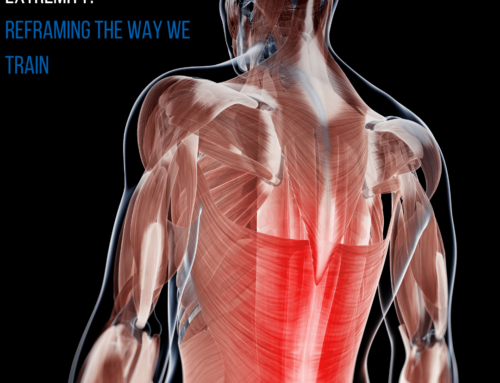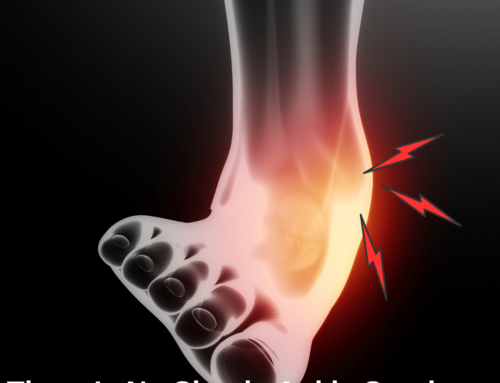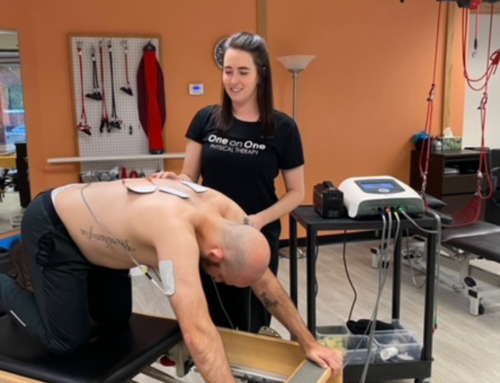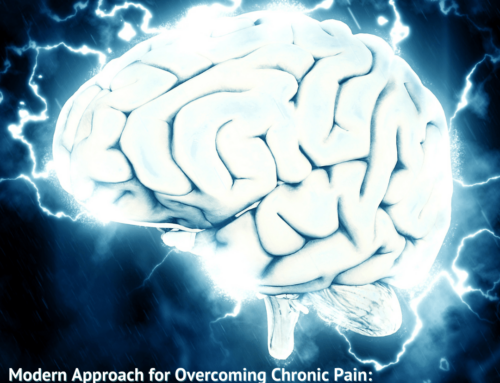Scar Mobilization: What you need to know
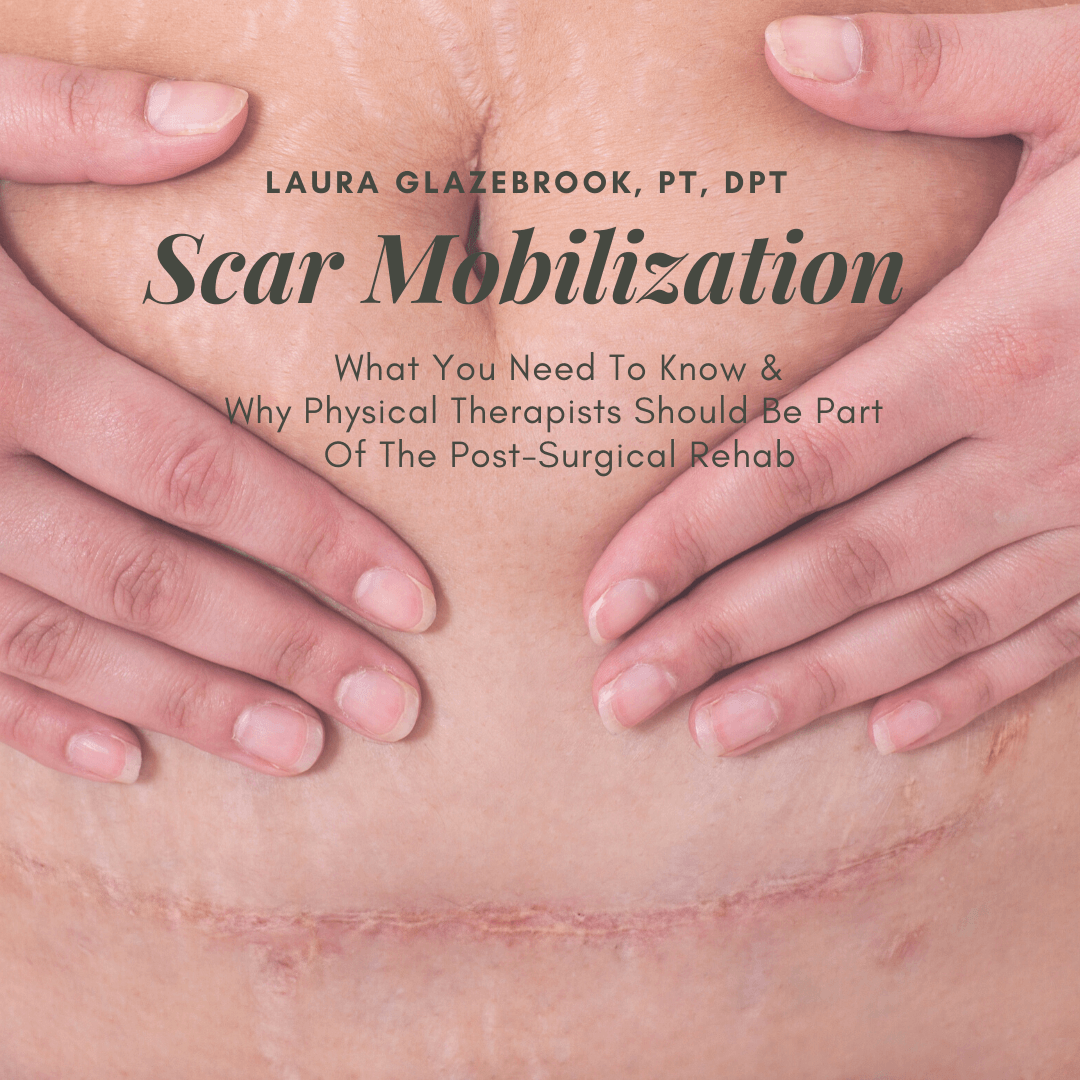
The body is really a phenomenal system that has the unique ability to completely rebuild our tissues when we get injured, biologically stitching our wounds back together. It’s quite amazing! The special cells that lay down the collagen to create a scar do a fantastic job of closing the body off from the unforgiving world. The problem is that the collagen fibers don’t get laid down in a very organized fashion (think of a string of Christmas lights that mysteriously gets tangled into knots in its storage bin every year). The scar tissue is much stiffer and thicker than the adjacent tissue, and sometimes it can get restricted and bound down to the surrounding tissue. The deeper the scar goes into the body, the more layers of skin, muscle and connective tissue that can get stuck together. Scar mobilization should be a component of any post-op rehab and recovery process.
What is Connective Tissue?
The connective tissue, or fascia, literally connects us from head to toe and interweaves throughout every muscle and structure in the body. The fascia is meant to easily glide layer upon layer like spiderwebs, and we depend on that flexibility to allow us to achieve good mobility. With an overly tight scar, what once was nice and mobile is now restricted and stuck, like a kink in a pipe or a knot in a cord. The tension these knots create can affect the kinetic chain, forcing other parts of the body to overcompensate and work harder. For example, if you have an abdominal scar from a C-section or hysterectomy, you may find that you have pain in your low back, hip, or even your shoulder.
What Happens to the Connective Tissue After Surgery?
We all forget that surgery, however life-saving or necessary, is trauma by its very nature. The surgeons cut through three layers of skin, unfold layers of fascia and muscle and move organs around to do their job. This gets particularly tricky in the abdomen, simply due to the number of organs and tissues that can get caught in the crossfire. Then think about all the crucial core muscles that needed to be cut in the process. Those muscles have literally been severed in places, robbing us of some crucial stability needed to perform the activities that we love, ranging from advanced sport and fitness to simple every day motions. The scars are inhibiting the muscles they cut, and sometimes they even inhibit the muscles around them. When these muscles contract, they sometimes end up tightening the scar tissue or surrounding fascia further. Even more startling, our scars can continue to tighten over time, whenever we gain or lose a large amount of weight, or when we have a systemic illness or prolonged stress. The body detects the stressor as a threat and is simply trying to protect us, but as you now know, tightening an already tight scar can cause other issues.
Sometimes the effects from a poorly healed scar is painful immediately, while other times, the pain onset is more insidious, disguising itself as a vague hip or low back pain that starts weeks, months, or even years post-surgery. Many people seek help from the doctors, maybe even have an MRI or X-Ray, only to find (to our extreme frustration) that there is nothing structurally wrong with the area that’s causing us pain. Again, a restricted or adhered scar tissue can cause pain not just in the area of the scar, but in the adjacent tissue and joints that connect tot the scar.
Is Your Scar “Normal”?
Everyone’s bodies handle scars differently. Some scars heal “normally” and never cause any issue, whereas some can become overgrown. You may have heard of these called hypertrophic or keloid scars. These are scars that become excessively thickened or reddened. Along with being unsightly, they can also become itchy or painful. Certain people may have predispositions to this type of scarring.
Physical Therapists Offer Scar Mobilization and More!
Physical Therapists have specialized training in scar mobilization and breaking up the adhesions that are limiting your movement. On your first session, the PT will take a thorough history, so it is important to mention all surgeries you have undergone, particularly in the abdomen and spine, that could be impacting your movement and stability.
At One On One PT, we offer cold laser therapy, which decreases inflammation, reduces swelling, and promotes healing. Cold laser therapy is another intervention we use to help facilitate scar mobilization. We offer other manual therapy interventions such as myofascial release, soft tissue mobilization, dry needling to help restore function. Following scar mobilization, we focus on reactivating muscles and strength training to restore functional mobility and stability. In merely a few PT sessions, we can address the issues that are contributing to your pain or stiffness.
More and more healthcare professionals and surgeons are referring patients to PT after surgery, but some still do not, so you must advocate for yourself! Learning how to perform scar mobilization and how to strengthen muscles following surgery should be a primary goals following any surgery. We are here to help restore your body to its optimal function!
If you or someone you know are struggling with pain, loss of range of motion, or weakness following surgery, contact us and schedule a PT evaluation today!
